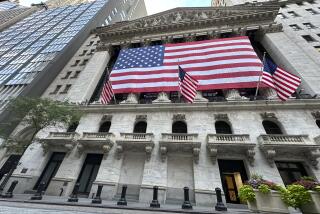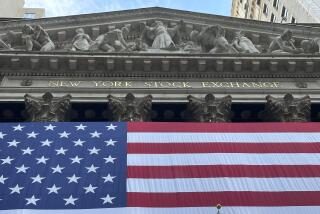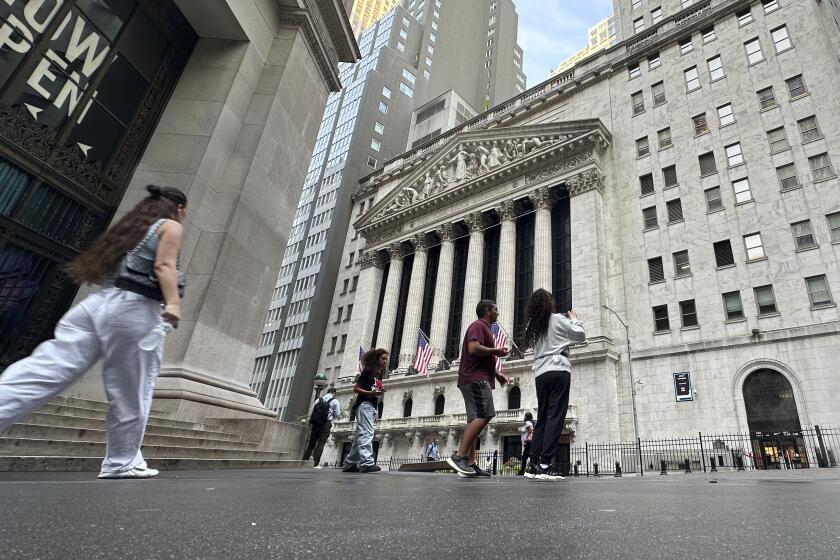Stocks set records again, lifted by strong jobs report

U.S. stock indexes set new record highs again Friday after an encouraging jobs report gave reassurance that the nation’s economy is still solid, despite the pain that factories are feeling from President Trump’s trade war.
The Labor Department’s report showed that employers added more jobs in October than economists expected, and hiring was stronger in prior months than previously thought. The numbers were encouraging enough for investors to overlook yet another report showing U.S. manufacturing is weakening more than expected.
The Standard & Poor’s 500 index rose 29.35 points, or 1%, to 3,066.91, setting an all-time high for the third time this week. It capped a fourth straight week of gains, its longest winning streak since March.
The Nasdaq composite climbed 94.04 points, or 1.1%, to 8,386.40, setting a new record for the first time since July. The Dow Jones industrial average climbed 301.13, or 1.1%, to 27,347.36. It’s within 12 points of its record high, set in July.
Together, Friday’s reports solidified Wall Street’s view that the economy is nestled in a sweet spot. The job market is strong enough to encourage spending by households, which has been the economy’s driving force. Traders hope that will make up for the downturn in investment by businesses, which have been holding off on spending given all the uncertainty about global trade.
Such a balance should in turn keep the Federal Reserve holding interest rates steady at their low levels, economists said. Low interest rates can goose economic activity. They also make stocks more attractive as investments relative to bonds.
Treasury yields climbed as optimism rose and traders pared back bets that the Fed — which cut interest rates this week for the third time this year — will cut rates again in the next few months. The yield on the 10-year Treasury climbed to 1.71% from 1.69%. The two-year yield, which moves more on expectations of Fed actions, rose to 1.56% from 1.55%.
Earlier in the day, yields were under pressure immediately after the manufacturing report’s release, which showed a third straight month of contraction. The report echoed weak data points on manufacturing from around the world as factories feel the brunt of the global trade war.
But even there, economists see some glimmers of optimism, such as a rebound in export orders, said Derek Hamilton, global economist at Ivy Investments. And after combining that with Friday’s better-than-expected jobs report, investors halved their expectations for another Fed rate cut this year, down to a probability of 11% from 22% a day earlier.
“Over the last decade, we’ve had these mini-cycles where manufacturing activity slows quite a bit, but the consumer keeps the economy going, and I think that’s what’s going on right now,” Hamilton said.
The wild card, as has been the case since Trump professed in early 2018 that trade wars are good and easy to win, is what happens in U.S.-China trade talks. The world’s largest economies have agreed to at least a temporary truce in what Trump has dubbed “phase one” of a trade deal. But uncertainty reigns over what will come of the talks.
“If we wake up tomorrow morning and get a tweet from President Trump that the deal is off, we’re raising tariffs, then all this is out the window,” Hamilton said.
In the interim, companies have continued to report profits that are weaker than a year earlier but not as bad as Wall Street expected. So far, roughly 70% of the companies in the S&P 500 have reported how much they made in the July-through-September quarter, they’re collectively on pace for an earnings decline of 2.8%, according to FactSet.
The slowing global economy is a big reason for the drop, as is the fact that companies are no longer getting a boost from the first year of lower tax rates. But the drop isn’t as big as the 4% decline that analysts were forecasting earlier.
A stronger-than-expected profit report from Exxon Mobil helped drive energy stocks to the biggest gain of the 11 sectors that make up the S&P 500. Exxon Mobil shares climbed 3%, and the sector overall rose 2.5%.
Benchmark crude oil rose $2.02 to settle at $56.20 a barrel. Brent crude oil, the international standard, rose $2.07 to $61.69 a barrel. Wholesale gasoline rose 6 cents to $1.66 a gallon. Heating oil climbed 6 cents to $1.93 a gallon. Natural gas rose 8 cents to $2.71 per 1,000 cubic feet.
Gold fell $3.40 to $1,508.00 an ounce. Silver fell 1 cent to $18.00 an ounce. Copper rose 2 cents to $2.65 a pound.
More to Read
Inside the business of entertainment
The Wide Shot brings you news, analysis and insights on everything from streaming wars to production — and what it all means for the future.
You may occasionally receive promotional content from the Los Angeles Times.






